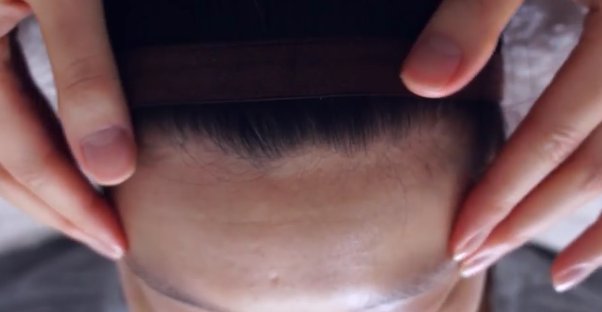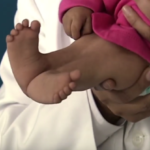The temple area refers to the region on the sides of the head in line with your eyes. Experiencing pressure in your temples region is, unfortunately, common affecting your performance of life activities. Although milder than pain in temples, the pressure in the temple can manifest in a tension headache or a debilitating headache with a migraine. Sometimes, this condition affects both the left and right sides and sometimes only one side is affected. You can experience the pressure in your temples like a band diffusing the pain in the head to different degrees of intensity.
Causes of Pressure In Temples
The pressure in temples is attributed to tensed muscles on nerves connected to the temple region. The nerves run through the muscles of the neck, jaw, face, scalp, and back. The tensed muscles cause pressure on the nerves triggering the pressure experienced like a band surrounding the temple region.
Tension headaches
Common types of headaches in which pain starts in the temple region and may extend to the back of your neck.
Symptoms of tension headaches
- Feeling like a band is tightening around the head.
- Start at the front of the head around your eyes spreading over the whole head.
- You may have a blurry vision but if symptoms such as vomiting or sensitivity are also present, you have a migraine instead.
- Can be episodic starting hours after waking up and building up in intensity as the day progresses or chronic in which the pain is almost always there throughout the day varying in intensity.
Migraine headaches
These are severely painful headaches known to affect many people in America.
Symptoms of migraines
- Pulsating or throbbing pain.
- The pain is often severe and incapacitating and worsened by triggers like certain odors.
- Nausea, vomiting, and sensitivity to light, sound, and odors.
- Mild forms of migraines may resemble tension type headaches.
- Mood changes, loss of appetite, nausea and temporary disturbances of nervous functions such as vision and speech.
Problems of the temporomandibular joint
When you have problems with TMJ, they can cause headaches that create pressure in your temples. The cause is thought to originate from the muscles found in the joints of the muscles. Grinding your teeth, stress, arthritis, and jaw joint issues also trigger the headaches. A dentist is better placed to diagnose the cause of the problem.
Concussion headaches
These result in the event of a head injury and produce symptoms like altered speech and balance, confusion and memory problems, the headaches may manifest as tension headaches or migraines but clear as soon as the concussion goes away.
Tumors
Headaches can be caused by the pressure resulting from a brain tumor although this rarely happens. Such headaches do not get permanently relieved by the use of pain relievers or rub in massage motions. They are also accompanied by other symptoms such as seizures, memory problems, unsteady balance, vomiting or wrongful sensations. If you are experiencing pressure in your temples and a headache that just won’t go away, it is important to consult your doctor in case a tumor is behind it.
Hemorrhages
Brain hemorrhages are also rare but can happen if you have a brain injury, high blood pressure, liver disease, brain tumors or an aneurysm. The headaches are accompanied by symptoms like seizures, vomiting, numbness and unstable balance. Prompt action is also required in response to such occurrence.
Infections like meningitis, sinusitis and common cold
Meningitis is the inflammation of the line around the brain and spinal cord due to a viral or bacterial infection. It presents itself with a stiff neck, fever, vomiting, and seizures. It typically clears itself in two weeks and can be prevented by immunizations.
Sinusitis and common cold also cause a heavy sensation around the temple.
Consumption of alcohol
Hangovers after excessive consumption of alcohol can cause pressure felt on your forehead and temples.
Diagnosis
Diagnosis includes a doctor’s evaluation of your description of the symptoms.
Computed tomography or Magnetic resonance imaging (MRIs) is used to rule out other causes.
A dentist suspecting a problem with your TMJ will likely take an x-ray of your temporomandibular joint to confirm his/her suspicions.
Natural Remedies To Relieve Pressure In Temples
- Massaging the temple area or the trigger points using your finger tips in a circular motion in five to ten strokes and at least two times a day should get rid of discomfort caused by tension headaches.
- Placing hot packs on the temple region or taking a warm water bath can also alleviate the pressure if it is caused by temporal causes, for example, eye strain.
- Avoid straining your eyes and give them a few minutes break when watching the television, reading continuously or working on the computer.
- Sleep enough for seven to eight hours to prevent restlessness during the day that can cause tension in the temporal nerves and muscles.
- Drink a cup of coffee but avoid over consumption that may trigger over dependency headaches.
- Taking green and chamomile tea is effective in reducing pressure on the temporal nerves and soothing the effect of irritated nerves
Other Treatment Options
- Over the counter pain relievers such as aspirin, acetaminophen and ibuprofen can relieve tension headaches. They are also used to relieve concussion headaches before the concussion clears.
- Eliminating the triggers for migraines and using drugs to stop, control and prevent a migraine from progressing. Treatment with drugs should be accompanied with behavioral and psychological interventions in order to be effective.
- In the case of TMJs, the dentist may recommend an oral surgeon to correct the joint’s problem.
- Tumors and hemorrhages are life threatening conditions that require specialized medical care such as surgery and transfusions.
- In the case of bacterial meningitis, treating with antibiotics is sufficient. Viral meningitis is like a cold and is treated with cold and fever medicines.


